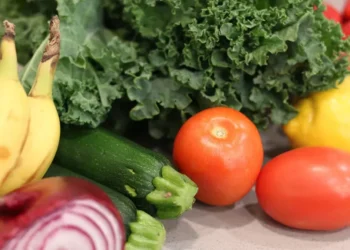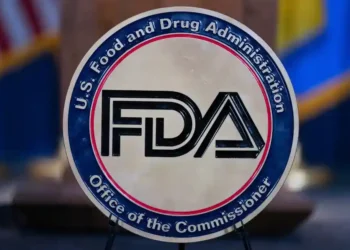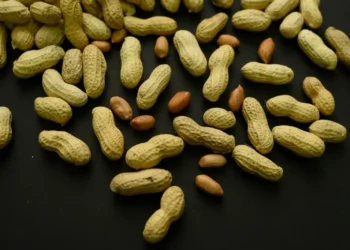American Heart Association Issues New Guidelines on Ultraprocessed Foods
Published: August 9, 2025, 18:30 EDT
Most UPFs are harmful to health, but a few exceptions exist, AHA says
The American Heart Association (AHA) has released updated guidelines on ultraprocessed foods (UPFs), highlighting their significant health risks while acknowledging that a limited number of such foods may be less harmful if consumed in moderation. The recommendations come at a time when more than half of Americans’ daily calories come from UPFs — a statistic public health experts find deeply concerning.
A Timely Warning for Public Health
The guidance, published Friday in the journal Circulation, was issued just days before the U.S. Department of Health and Human Services’ second “Make America Healthy Again” (MAHA) Commission report, led by Secretary Robert F. Kennedy Jr. The first MAHA report, released in May, outlined the role of ultraprocessed foods in increasing chronic illness rates among children.
According to the AHA, the message is clear: the majority of ultraprocessed foods — typically high in added sugars, unhealthy fats, and salt — are detrimental to heart health and overall well-being. The organization urged food manufacturers to improve product formulations and called for stronger regulatory measures to reduce the prevalence of unhealthy UPFs in the marketplace.
Are All Ultraprocessed Foods Unhealthy?
While the prevailing scientific consensus is that UPFs are harmful, the AHA acknowledges that not all fall into the same category. Certain items, such as whole grain breads, low-sugar yogurt, tomato-based sauces without excessive additives, and spreads made from nuts or beans, may offer nutritional value when chosen carefully.
However, Christopher Gardner, vice chair of the AHA advisory writing group and a professor of medicine at Stanford University, cautioned against overestimating these exceptions.
“Let’s not give the industry a pass just because a few options are healthier than the rest,” Gardner said. “The majority of ultraprocessed foods are still loaded with salt, sugar, and unhealthy fats.”
Gardner also noted that cosmetic additives and heavy processing contribute to overeating, amplifying the health risks associated with these products.
Americans’ High Reliance on UPFs
Recent data from the U.S. Centers for Disease Control and Prevention (CDC) underscores the scope of the problem. The CDC found that Americans aged 1 and older get about 55% of their daily calories from UPFs. For children aged 1 to 18, that number climbs to 62%.
The AHA report cites extensive evidence linking high UPF consumption to increased risks of cardiovascular disease, type 2 diabetes, obesity, and premature death. A February 2024 meta-analysis of nearly 10 million people found that consuming just one additional serving of ultraprocessed food per day was associated with a 50% higher risk of death from heart-related causes. The same review found links between UPF consumption and a 55% higher risk of obesity, a 41% increased risk of sleep disorders, a 40% greater risk of developing type 2 diabetes, and a 20% higher risk of depression.
Balancing Risk with Practicality
The AHA recommends that Americans reduce their intake of the most harmful UPFs — especially those high in added sugar, sodium, and saturated fats — while allowing room for a limited number of affordable, higher-quality UPFs within an otherwise healthy diet.
However, some experts argue that even “healthier” UPFs may have drawbacks. Marion Nestle, professor emerita of nutrition, food studies, and public health at New York University, expressed disappointment in the AHA’s emphasis on healthier processed options.
“The number of foods in that category is small, and research shows that even ‘healthy’ UPFs can lead people to consume more calories than minimally processed foods,” Nestle said.
She pointed to a recent large-scale clinical trial in the United Kingdom, which found that participants lost twice as much weight when eating meals prepared from whole, minimally processed ingredients compared to store-bought “healthy” UPFs.
Three Categories of Ultraprocessed Foods
To help consumers make better choices, the AHA has grouped ultraprocessed foods into three categories: healthy, moderately healthy, and unhealthy.
Healthier Choices
- Fresh or frozen fruits and vegetables without added sugar or salt
- Whole grains such as oats and brown rice
- Unsalted nuts and seeds
- Dried beans and legumes
- Plant-based oils
- Low-fat plain milk or yogurt
- Lean, unprocessed meats
- Water and unsweetened beverages
- Low-sugar plant-based meat and dairy alternatives
Moderately Healthy Choices
- White rice and pasta
- Full-fat dairy products
- Freshly made refined grain bread
- Salted nuts
- Canned fruits in light syrup
- Canned beans with added salt
- Hard cheeses
- Egg replacements
- Low-fat, low-sodium soups
- Store-bought meals using ingredients from the healthy category
Unhealthy Choices
- High-fat red meat, pork, and processed meats (e.g., hot dogs, sausage, chicken nuggets)
- Butter, lard, and tropical oils such as coconut oil
- Sour cream and 100% fruit juice
- Sugar, honey, and maple syrup
- Crackers, chips, French fries
- Sweetened dried fruit, candies, cookies, and ice cream
- Boxed macaroni and cheese, instant noodles, frozen pizza
- Sugar-sweetened beverages, including energy drinks
- Refined grain breads, rolls, and tortillas
- Some canned or instant soups and canned fruits in syrup
Looking Ahead
As the MAHA Commission prepares to release its latest recommendations, the AHA’s guidance reinforces the urgent need for public health action on ultraprocessed foods. Experts agree that while some UPFs can be incorporated into a balanced diet, the overwhelming majority should be consumed sparingly — if at all.
For consumers, the takeaway is straightforward: prioritize whole, minimally processed foods whenever possible, and remain skeptical of “healthy” labels on heavily processed products.
This article was rewritten by JournosNews.com based on verified reporting from trusted sources. The content has been independently reviewed, fact-checked, and edited for accuracy, neutrality, tone, and global readability in accordance with Google News and AdSense standards.
All opinions, quotes, or statements from contributors, experts, or sourced organizations do not necessarily reflect the views of JournosNews.com. JournosNews.com maintains full editorial independence from any external funders, sponsors, or organizations.
Stay informed with JournosNews.com — your trusted source for verified global reporting and in-depth analysis. Follow us on Google News, BlueSky, and X for real-time updates.












